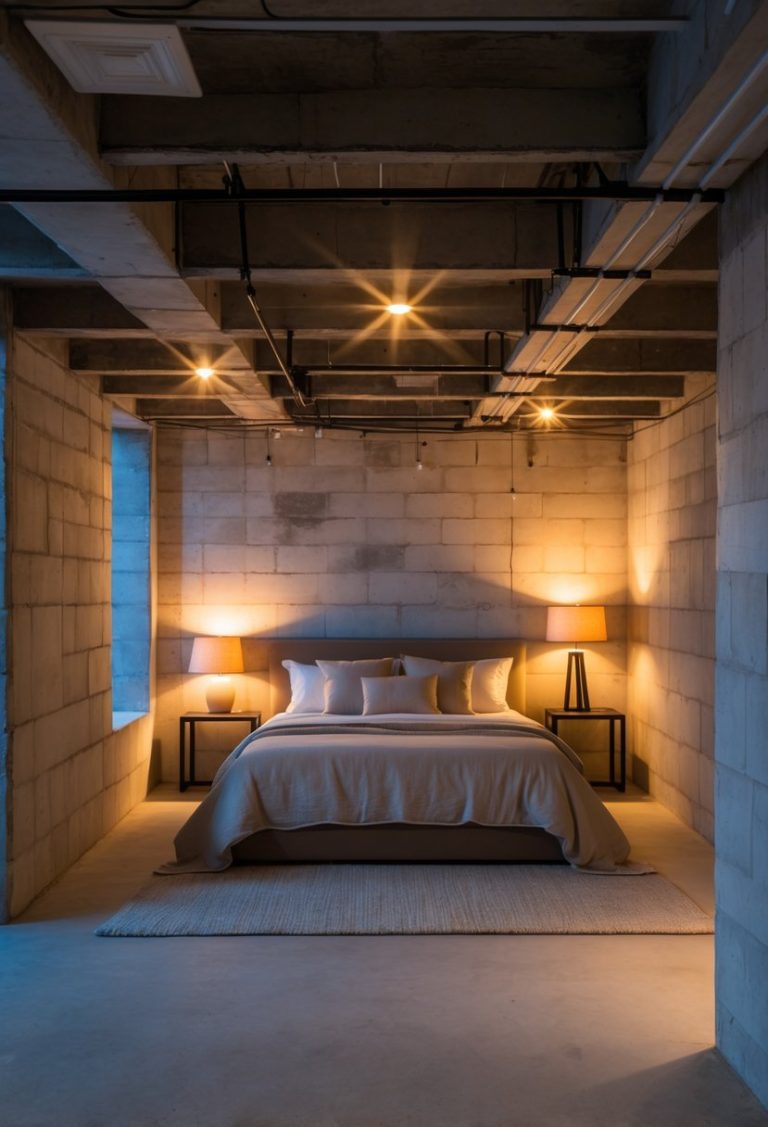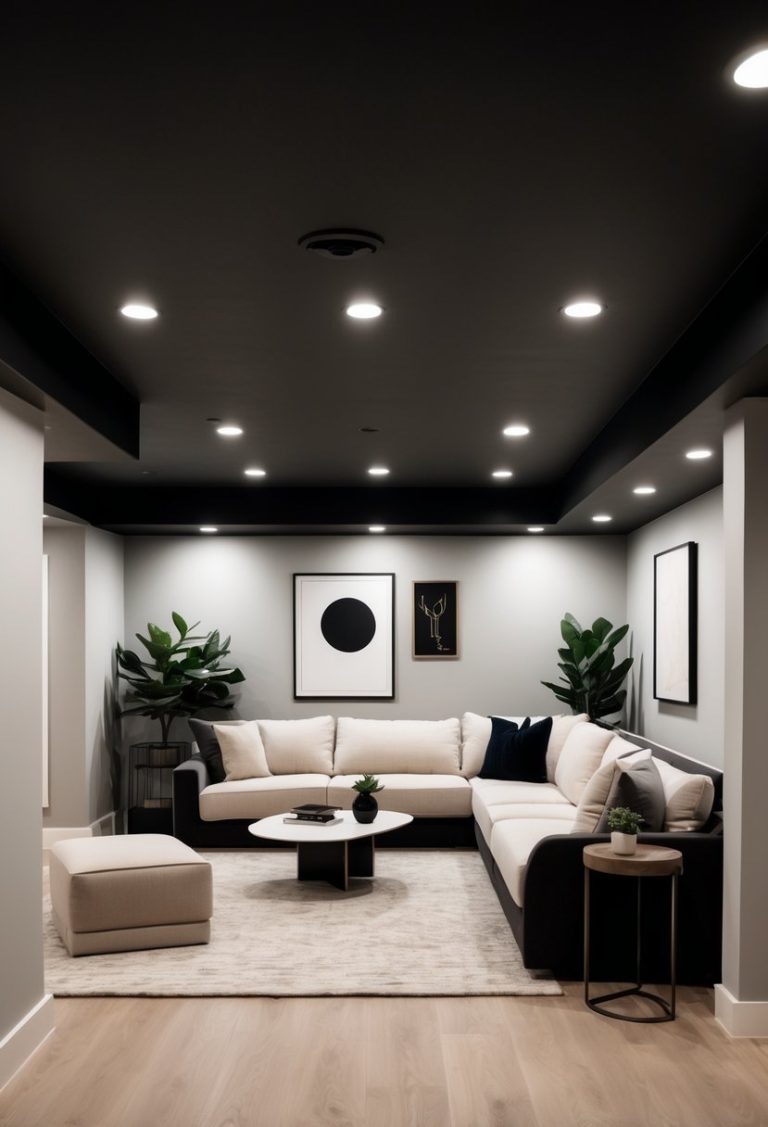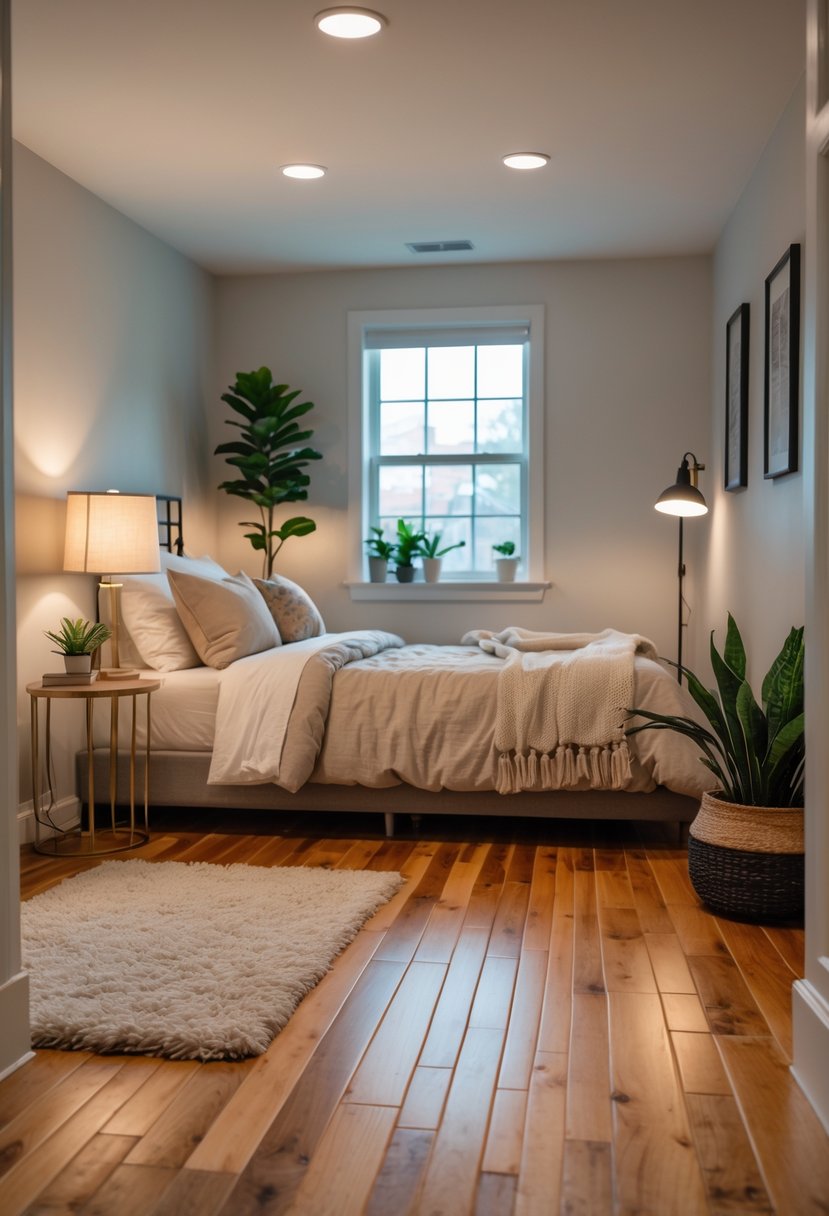7 Basement Bedroom Ideas No Windows to Maximize Comfort and Light
Many basements lack windows, which can make them feel dark and cramped, especially when used as bedrooms. Despite this challenge, these spaces can be designed to feel comfortable and inviting with the right approach.
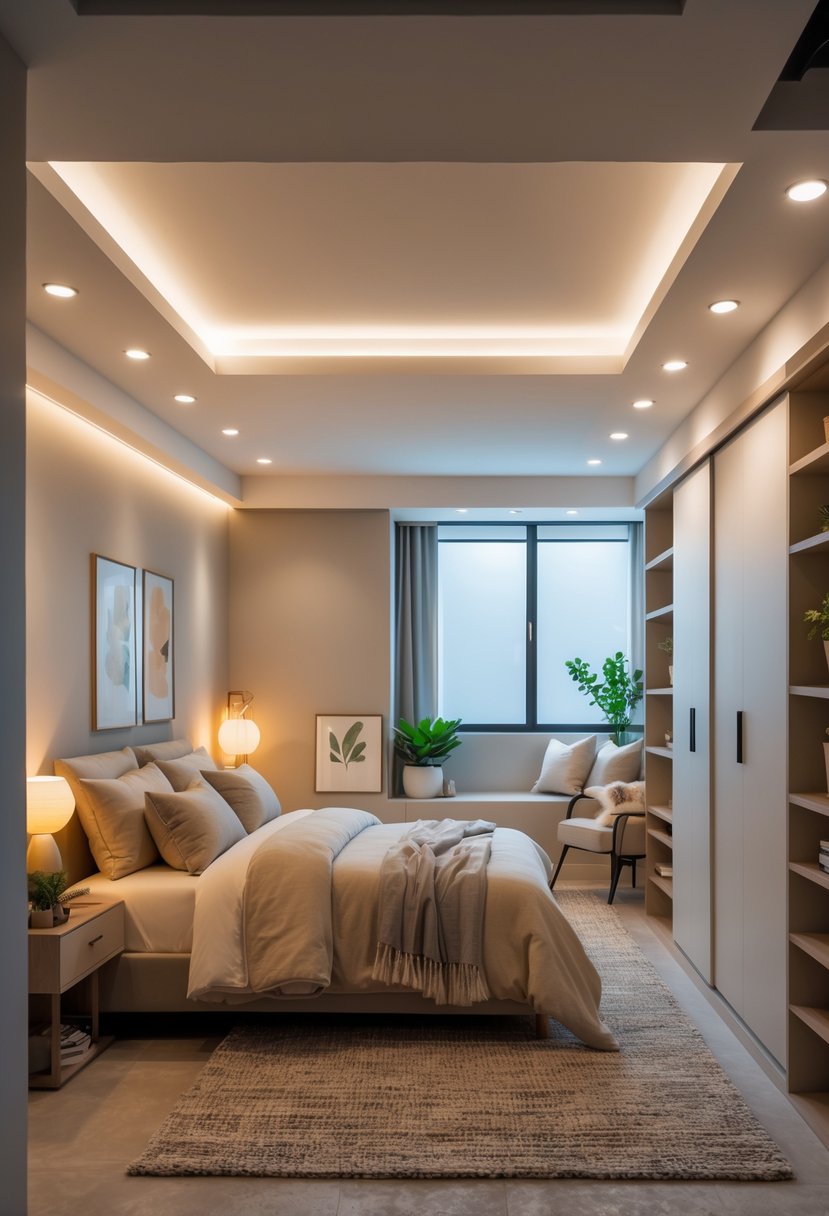
The key to a successful basement bedroom without windows is to use design techniques that create light, warmth, and a sense of openness. With careful planning, a basement bedroom can become a practical and pleasant living area.
1) Paint walls bright white to maximize light reflection

Painting basement bedroom walls bright white helps reflect any available light. This makes the space feel more open and less closed-in.
White walls work well even without windows. They bounce light from lamps or ceiling fixtures around the room.
Using bright white creates a clean, simple look. It avoids making the room feel dark or cramped.
2) Use layered artificial lighting including recessed and task lights

Layered lighting helps brighten basement bedrooms without windows. Recessed lights provide general illumination without taking up space.
Task lights, like wall sconces or bedside lamps, add focused light for reading or other activities. Combining these types creates a balanced and comfortable light level. This approach prevents the room from feeling dark or cramped.
3) Incorporate large artwork to add depth and visual interest
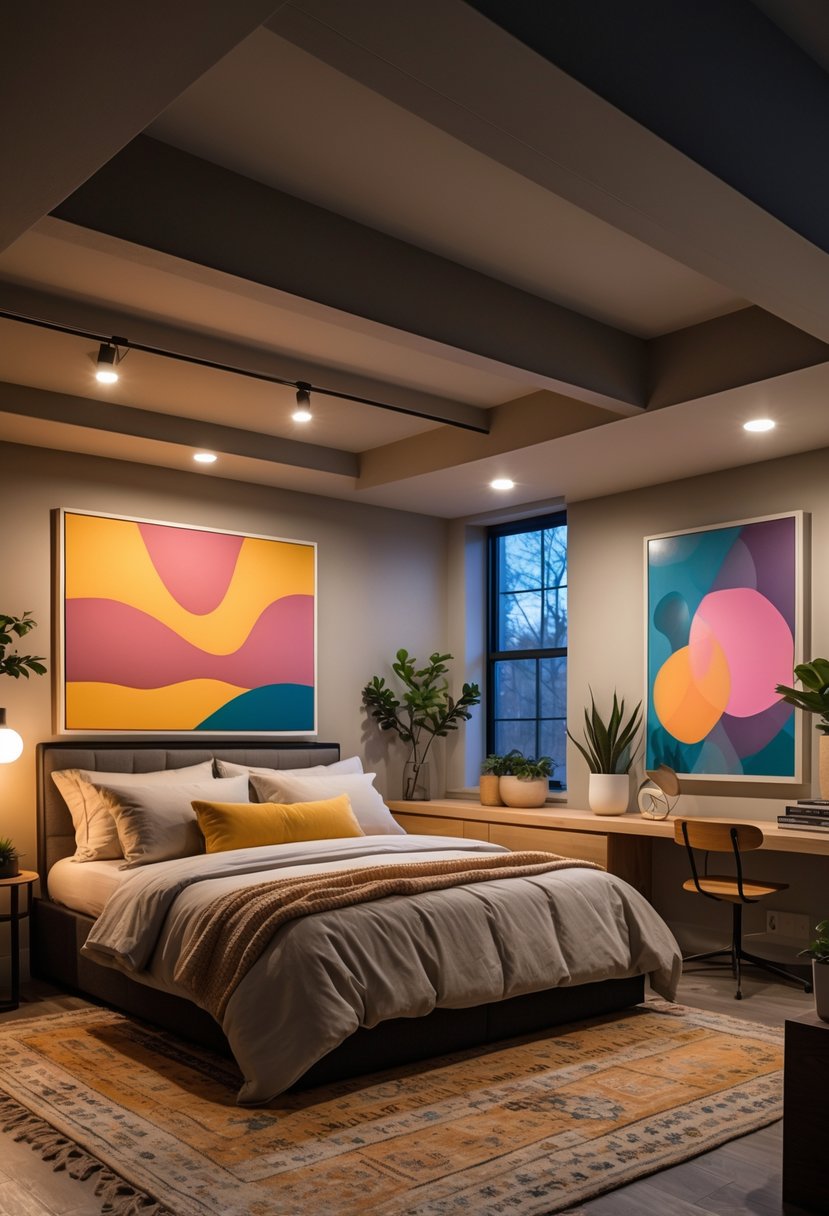
Large artwork can help make a basement bedroom feel less closed in. It draws the eye and creates a sense of space.
Choosing pieces with light or bright colors can also lift the mood of a windowless room. This adds personality without crowding the area.
Placing the artwork on a main wall helps anchor the room. It keeps the space from feeling too plain or empty.
4) Choose light-colored, textured bedding and flooring

Light colors on bedding help brighten a basement bedroom with no windows. Whites, grays, and soft beiges reflect light and make the space feel larger.
Textured fabrics add visual interest without making the room look flat. For flooring, light carpet or rugs also enhance brightness and help the room feel cozy.
5) Install glass doors to allow light flow between rooms
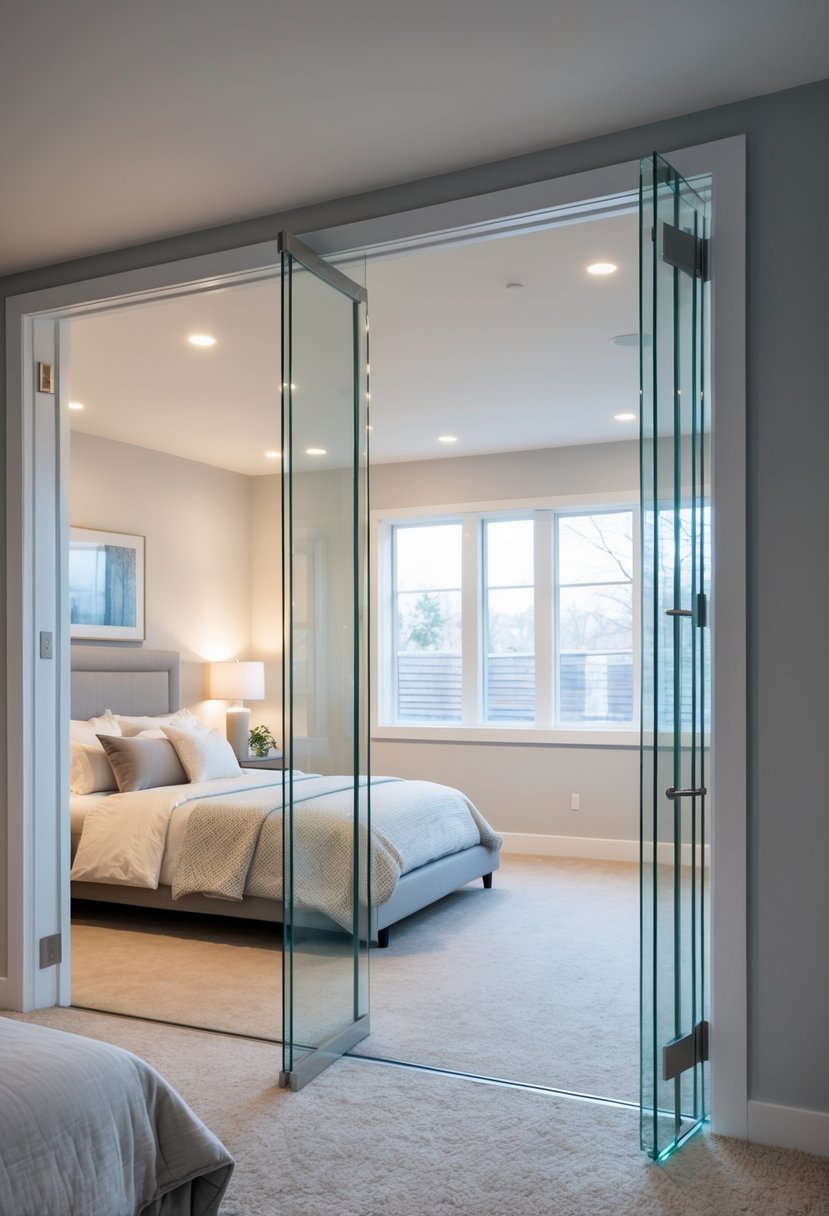
Glass doors help bring natural light from other parts of the house into a basement bedroom. They open up the space visually and make it feel less closed off.
Options like frosted or French glass doors add privacy while still allowing light to pass through. This simple change improves brightness without needing windows.
6) Remove heavy drapery and replace with white sheers or none
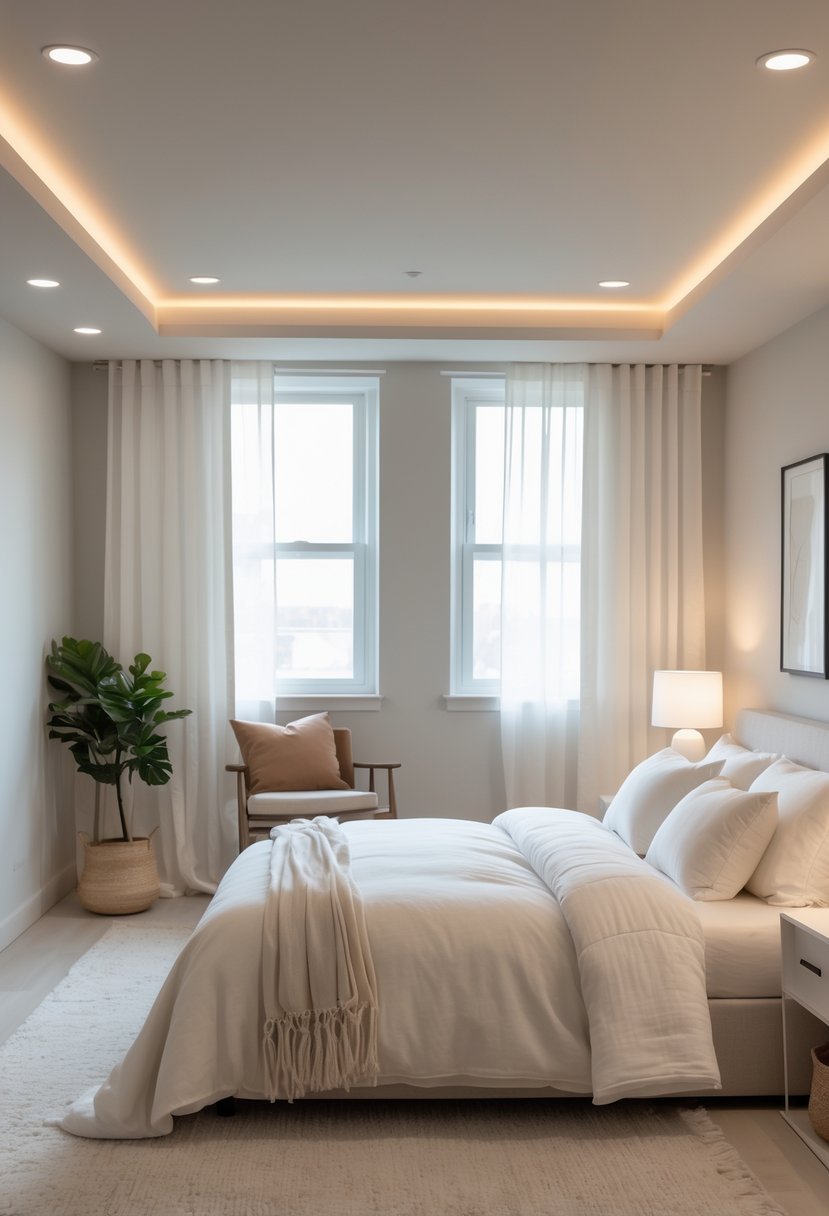
Heavy drapery can make a basement bedroom feel darker and smaller. Removing these and using white sheers helps to softly filter any light, brightening the space.
If privacy is not a concern, leaving windows uncovered can also make the room feel more open. White sheers or no window treatments create a clean, simple look that improves light flow.
7) Add mirrors to create a sense of openness and brightness
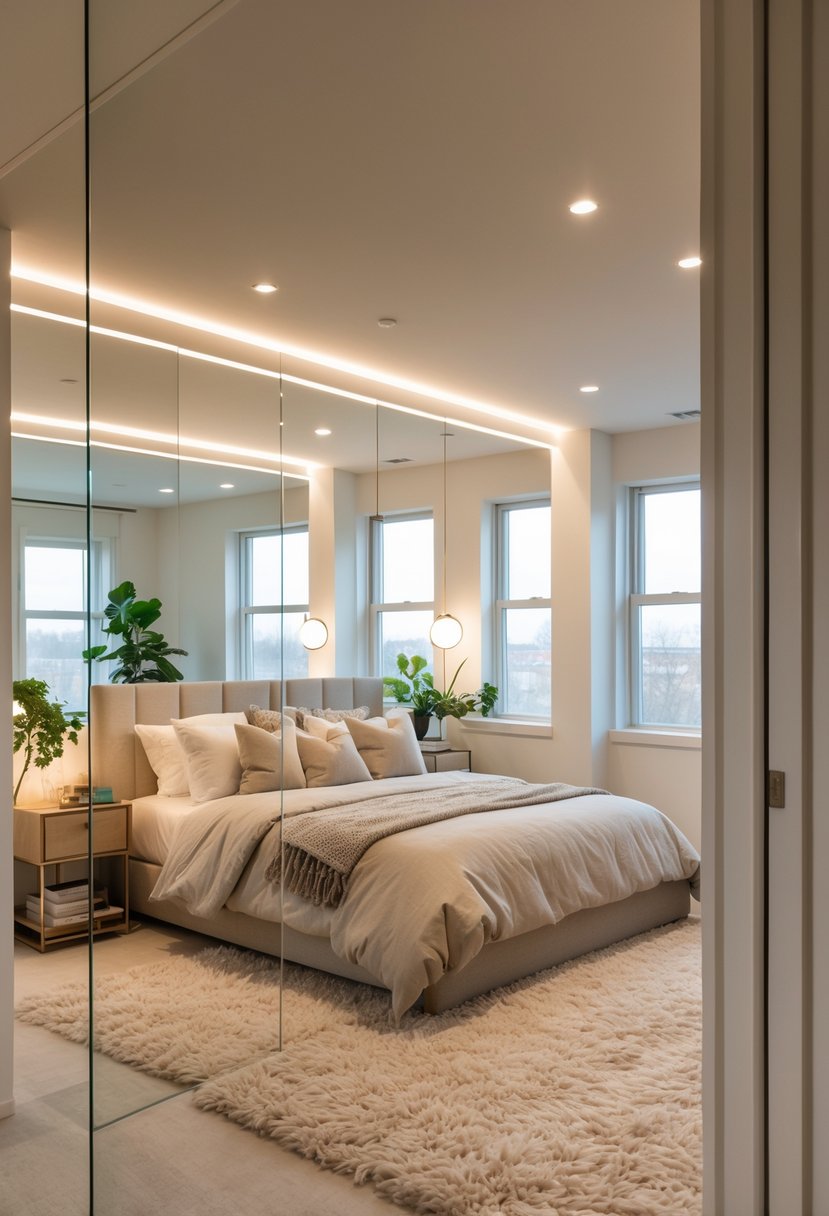
Mirrors reflect light, helping to brighten a basement bedroom without windows. Placing a mirror where a window might go can make the space feel more open.
Using several mirrors or one large, tall mirror boosts the sense of height and depth. Keeping mirrors clean and free of clutter improves their effect.
Safety Considerations For Windowless Basement Bedrooms

Creating a safe basement bedroom without windows requires attention to escape routes and proper air flow. These two factors are critical to meet building codes and ensure the room is livable.
Egress Requirements
Building codes often require a basement bedroom to have an egress, which is an emergency exit like a window or door. Without windows, the room must have a door that leads directly outside or to a safe exit path.
Some areas allow exceptions if the basement has a sprinkler system or additional fire safety features. However, many cities and towns still require at least one window or door that can be used in emergencies.
It is important to check local building regulations before finishing a basement bedroom. Adding an egress window or door can prevent fines and improve safety in a fire or other emergency.
Ventilation Solutions
Ventilation is key to keep air fresh and reduce moisture in a windowless basement room. Without natural airflow, the room can feel stuffy or damp, which may cause mold.
Installing a mechanical ventilation system or using an HVAC unit with fresh air intake is common. Another option is a heat recovery ventilator (HRV) that exchanges indoor and outdoor air efficiently.
Fans and dehumidifiers can also help control humidity and circulate air. Proper ventilation improves comfort and makes the room healthier to live in.
Regular maintenance of these systems is necessary to ensure they work effectively over time.
Enhancing Comfort And Livability

Making a basement bedroom comfortable and livable means focusing on proper lighting and good air quality. These two factors help create a space that feels welcoming, safe, and healthy.
Lighting Strategies
Since basement bedrooms often lack windows, artificial lighting is key. Layer different types of light: use overhead lights for general brightness, wall sconces for soft ambient light, and task lamps for reading or work areas.
Choosing bulbs with a daylight color temperature (around 5000K) helps mimic natural light. Installing dimmer switches lets residents adjust brightness to fit moods and needs.
Mirrors and light-colored walls reflect light and make the room feel larger and brighter. LED strip lights under shelves or furniture can add subtle illumination without crowding the room.
Air Quality Improvements
Basements tend to have poor air flow and can feel damp. Using a portable air purifier with a HEPA filter can reduce dust, allergens, and odors.
Adding a dehumidifier controls moisture levels, preventing mold growth and musty smells. Ventilation is important: if no windows exist, a mechanical ventilation system or air exchanger should be considered.
Houseplants that improve indoor air quality, like spider plants or peace lilies, can also help. Regular cleaning and using materials that resist mold support a healthier environment.


